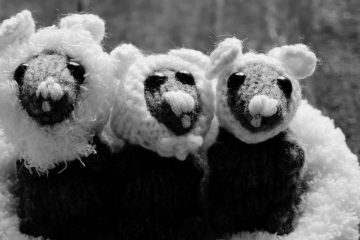What Happened On October 31st?
On October 31st around 2,000 years ago, Celtic tribes across Ireland, Scotland, and Wales gathered for Samhain. Bonfires blazed on hilltops, believed to guide spirits who roamed freely during this time. Villagers placed offerings of food and drink outside their homes, hoping to appease these otherworldly visitors and protect their households through the dark months ahead.
People donned animal skins and masks, aiming to hide from malevolent spirits. Disguises allowed them to move unnoticed by forces that might cause harm. The Druids, who held great spiritual authority, performed rituals that included sacrifices and fortune-telling. Villagers extinguished their hearth fires and relit them using the communal bonfire, believing that these flames carried protection for the entire community into their homes as they prepared for winter. Samhain didn’t just signal the end of the harvest—it signified the completion of one cycle and the start of another, a concept deeply ingrained in the Celtic understanding of life, death, and rebirth.
Villagers rounded up their livestock from the pastures and slaughtered animals to provide food for the winter months. This practice was both practical and symbolic. The feast that followed marked the community’s readiness for the challenges of winter, ensuring survival. As families gathered, they exchanged stories of ancestors, honoring their memories and solidifying the bonds between the living and the dead. This time of year wasn’t simply about death, but rather a celebration of the continuity of life and the deep connection between the past and the present.
Samhain influenced how the Celts structured their year, dividing it into two halves—light and dark. On this night, the boundary between the worlds of the living and the dead was believed to be at its thinnest, allowing spirits to pass through. The Druids used the night’s events to perform divination, casting stones into fires or observing the patterns in smoke to predict future harvests, marriages, or conflicts. These prophecies guided community decisions for the coming year. Such predictions had an impact on everything from the success of crops to the outcome of tribal battles, and the night’s rituals carried a weight of responsibility for the Druids.
Villagers encircled large bonfires, casting the bones of slaughtered animals into the flames. This act of burning bones, known as “bone fires,” was thought to protect the village from the hardships of winter. Carrying flames from the communal fire to relight hearths symbolized bringing the warmth and strength of the community back into each home. The fires also provided a gathering point, where the tribe could bond and take comfort in their shared traditions.
Despite Christianity’s efforts to replace Samhain with All Saints’ Day on November 1st, many of the festival’s customs endured. People continued to wear disguises, which later transformed into the Halloween costume tradition. Turnips were originally hollowed out and carved to ward off spirits, a practice that evolved into the use of pumpkins in America, becoming the jack-o’-lanterns familiar today. Even though the church imposed new religious holidays, these ancient customs persisted, subtly influencing modern-day celebrations.
Samhain featured prominently in Celtic mythology as well. Several significant mythological events were said to take place during this festival. For instance, the legendary battle of the Táin Bó Cúailnge, in which the hero Cú Chulainn defended Ulster, was believed to have occurred around Samhain. The time of year, associated with both spiritual and physical trials, reinforced the idea that this festival was about more than just honoring spirits—it was a time of heroism and significant change. These myths and stories helped strengthen the connection between the people and their cultural heritage, reminding them of the importance of bravery and resilience.
As Irish and Scottish immigrants brought their traditions to America, Samhain blended with local customs, transforming into Halloween. Elements such as lighting fires, wearing costumes, and honoring the dead survived, though they adapted to fit the local culture. For example, the practice of “guising,” where people dressed in disguise to protect themselves from spirits, evolved into trick-or-treating. Even though the meanings behind these customs shifted, they retained echoes of their Celtic origins, and Samhain’s influence remains strong in the modern Halloween celebration.
In recent years, neo-pagan and druidic communities have revived Samhain, continuing to observe the festival as their ancestors did. They light bonfires, perform rituals, and honor the dead, keeping alive the customs that once marked the passage of the year for the Celts. While Halloween has become a mainstream holiday, often focused on commercial celebrations, Samhain remains a quieter, more reflective observance for those who wish to maintain a connection to the ancient cycles of life and death. These rituals offer a sense of continuity, reminding modern practitioners of the importance of honoring the past while looking ahead to the future.





